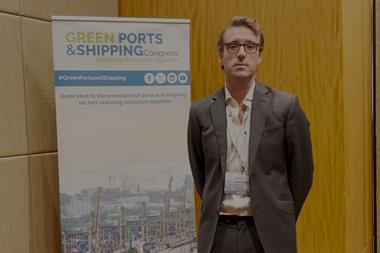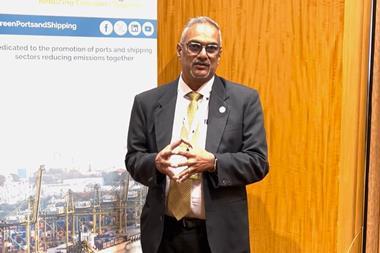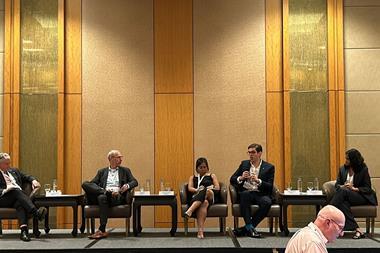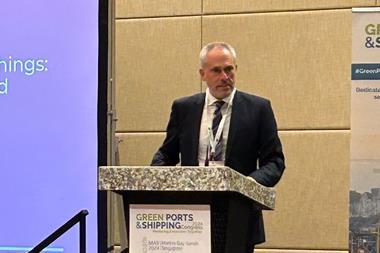The number of Green Shipping Corridors have been growing in order to ensure end to end fuel availability on major feeder routes. But there is an increased need for implementation of multi-fuel bunkering and progress on sustainability and efficiency goals at ports and terminals, according to a panel at the final day of the Green Ports & Shipping Congress on 9 May.

“Studies are underway on technology, economics and regulations in public-private partnerships for specific green shipping corridors by 2030 for zero-emission ships,” said Elena Talalasova, senior project manager at the Global Maritime Forum.
To date, 171 stakeholders have been brought onboard and robust discussion is underway on fuel sources such as methanol, ammonia, hydrogen, electricity and biofuels across container, ferry, bulk, tanker and cruise ships, Talalasova said.
For the industry as well as policymakers, Green Shipping Corridors would see cargo ships travel along routes using only zero or low emission fuels over fossil fuels with Rotterdam and Singapore now building new storage facilities for ammonia and methanol.
Singapore is also focused on more solar at port terminals, and new marine fuels for harbor craft as part of sustainability initiatives.
Singapore has indeed gone a bit further with a Green and Digital Shipping Corridor (GDSC) study and development arrangements with Europe and Australia, among others.
The Singapore-Rotterdam GDSC was started in August 2022 with 26 global value-chain partners, according to Wei Siang New, director, Maritime Decarbonisation & Net-Zero Pathways, at the MPA (Maritime and Port Authority of Singapore).
Elsewhere, a Singapore GDSC with the Port of Los Angeles was established in April 2023 supported by C40 Cities and GDSC memorandums of understanding were signed with six ports in Japan and Tianjin in China in December 2023.
As well, a Green Shipping Corridor cluster alliance focuses on fleet operating costs across the Indian and Pacific oceans to create a common potential bunker hub at Singapore, said Maike Nimmrich, commercial asset manager, at MPC Containers, AS.
This cluster, the Silk Alliance, has a 2030 projection for the number of green ships that hinges on engine technologies and uncertain fuel choice availability, though customer demand for greener cargo shipment options is growing, Nimmrich said.
A key issue is gathering support from stakeholders and widening the number of entities that can benefit from green corridors.
“Green shipping corridors need to maximize co-benefits to get government support,” said Talalasova.
The practical work of building production centres and getting the fuel to bunkers and terminals, a nascent process now that could lead to hundreds of thousands of new jobs to build the infrastructure, needs more study.
“Costs, energy density and production locations aligning with demand centres remain a challenge, said Mark Button, an associate at ARUP.
Button noted that a study showed renewable-powered (wind and solar) alternative fuel ammonia benefits by production of scale with fuel shipping costs manageable, but that building costs and timelines are challenging to meet the 2030 International Maritime Organization (IMO) goals by 2030.
He also said that regional alternative-fuel production to nearby bunkering sources may benefit by existing infrastructure, and work as a supplement to large-scale projects further afield.
One way to gather more interest in new projects is putting out initial proposals to existing stakeholders that can spark more interest.
“Once initial approaches were made to a few companies on the Green Fuel Corridor - interest has grown to new potential partners and stakeholders and we’ve been open to that process and looking at efficiency measures as well,” MPA’s Wei said.








